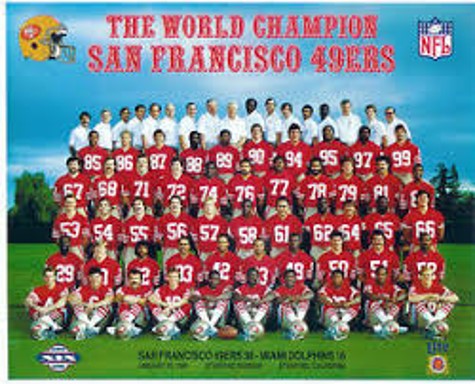8 Activity – How Many Things Is That?
In the previous chapter we discussed the question of “thingness” when resources contain pieces or parts like puzzles or Legos. Let’s build on that practice to analyze the “thingness” for some other familiar things.
Think about your bicycle. It came from the store in a big box. Someone had to assemble it from its parts — the frame, handlebar, wheels, tires, inner tubes, chain, pedals, brakes, cables, and so on. It was a lot of work to put the bike together, but then the collection of separate pieces had become one thing.
Now lets think about the “thingness” of a professional sports team like the San Francisco 49ers in football or the New York Yankees in baseball. Teams are sometimes treated as one thing, but are also treated as a collection of many things.

Why does every player on a sports team wear a name or number on their uniform? Because we often think of a team as a collection of individual players. We often talk about groups of players that are smaller than the entire team. We can think of a team as veterans and rookies, starters and reserves, offense and defense. We can also group them by positional roles — or as linemen, receivers, guards, forwards, and so on.
Now that you’ve had some practice thinking about the “thingness” of physical or tangible things, let’s discuss the thingness question for ‘information things.” it is a more difficult question to answer because while information resources often contain parts, the boundaries between the parts are less obvious.
When you get a school assignment to read a book, it can seem like a very big task, which can make it hard to get started on it. But if you think of the book as a collection of short parts, you can turn one hard reading task into a set of easier ones.


